Florida's building boom threatens wildlife-rich lagoon
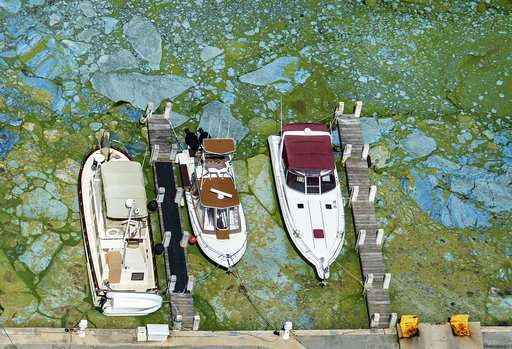
The most biologically diverse waterway in America is seriously ill.
The Indian River Lagoon is repeatedly being choked with oxygen-robbing algae, its surface increasingly dotted with thousands of dead fish, manatees, birds and other creatures.
The culprits: farm runoff and a huge influx of people that has sent lawn fertilizer and other pollutants into the lagoon, which runs 156 miles along Florida's Atlantic Coast, almost to Palm Beach, and includes the Cape Canaveral area.
"It's the death by a thousand cuts," said Bob Knight, an environmental scientist with the Howard T. Odum Florida Springs Institute who has studied Florida's waters for 40 years.
The lagoon's woes threaten the region's $2.5 billion recreation, fishing and tourism economy, alarming kayak tour operators, charter boat captains, restaurateurs and organizers of bird-watching festivals.
Environmentalists are distressed to see the lagoon's rich variety of life threatened in a crisis similar to what has happened in recent decades in such places as the Chesapeake Bay, Lake Erie and the Gulf of Mexico.
Although the federal and state governments have spent hundreds of millions of dollars to heal the lagoon in recent years, an Associated Press examination found that pollution spiked, algae blooms spread and fish kills worsened over the past decade and a half as central Florida's population swelled faster than that of anywhere else in the state.
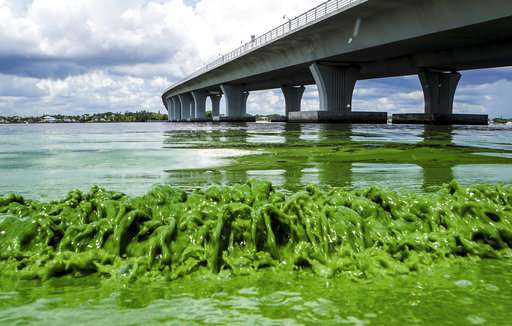
Water quality data analyzed by the AP showed that the average level of phosphorous—a byproduct of fertilizers and human waste that algae thrive on—rose nearly 75 percent between 2000 and 2016. Average chlorophyll readings, used to measure the presence of algae, almost tripled.
Home to more than 2,900 species of plants, birds and fish, the waterway has been polluted since the mid-20th century by fertilizer runoff from farms around Lake Okeechobee, which drains into the lagoon during heavy rains. Nevertheless, parts remained largely healthy until the recent building boom.
Since 2000, more than 1.5 million people moved into the six counties along the lagoon and three Orlando-area counties that drain into Lake Okeechobee or directly into the lagoon. More than 500,000 new homes were built in those counties over the same time period.
Paved-over expanses such as roads, driveways and parking lots have allowed runoff to make its way into the lagoon more easily. It has also been fouled by wastewater treatment plants that discharge into the lagoon, sewage spills from the plants during heavy rains, and leaky septic tanks.
In 2011, an algae "super bloom" killed more than 1 million fish and other animals there, according to state data. Intense algal blooms have returned each year since then. Last year, toxic algae killed more than 100,000 creatures, including manatees, or sea cows.
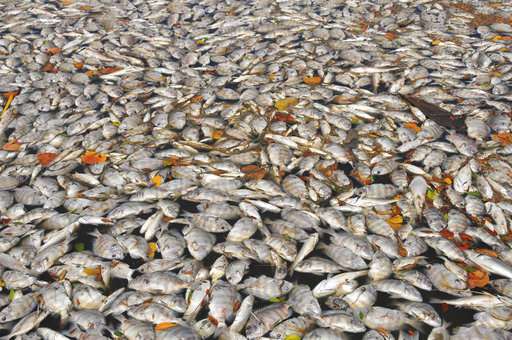
Now the increased algae are inflicting new types of damage, researchers say. Last year, baby oysters died en masse for the first time because of the brown tide. That is doubly alarming, because oysters filter the water.
Last year "was the icing on the cake because the fish kill didn't happen in remote parts of the river where people don't see it," said Laurilee Thompson, whose family owns the 465-seat Dixie Crossroads, a seafood restaurant on the Space Coast, as the Cape Canaveral area is known. "So now you have a very upset, influential populace that's going, 'Do something. Do something.'"
The reported number of marine creatures that have died spiked to 1.2 million in 2011, compared with 7,000 in 2000, and experts blame the algae.
"In 2011, the world seemed to shift and we suddenly got chlorophyll levels we'd never seen before," said Charles Jacoby, a water scientist with the St. Johns River Water Management District, a state water agency. "The system has been overloaded."
The housing boom was made possible by state water agencies and other state and local authorities that permitted development and allowed the filling in of wetlands.
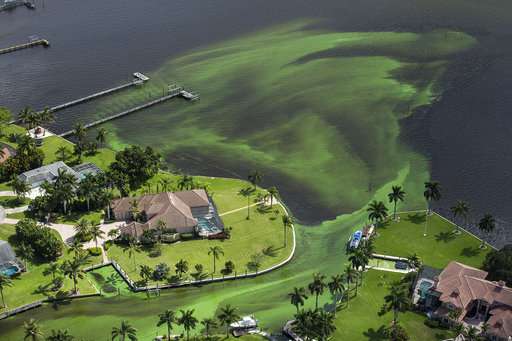
"Going forward, our permits aren't going to repeat mistakes of the past," Jacoby said. "If you build something, you have to hold water on that property ... so it doesn't just flow everywhere."
In the past 20 years, the annual value of the clams, oysters, crabs and shrimp caught along the lagoon has dropped from more than $20 million to $4.3 million, according to regional planners. The lagoon's problems, along with a voter-approved ban on large nets, played a big role in the disappearance of commercial fishermen.
Gloopy green algae often surround Capt. Rufus Wakeman's charter fishing boat at the dock. He said the sight scares off customers.
"When I first moved here, the river was a pristine environment that was pretty much second to none on the planet," said the white-bearded fisherman. "Over the last 30 something years, the degradation of the Indian River Lagoon has just been horrifying."
"The fish we see suffering here the most is the speckled sea trout," he said. "We used to be able to go out and catch 20, 30 a day, and now if you catch one or two or three you're doing really well."
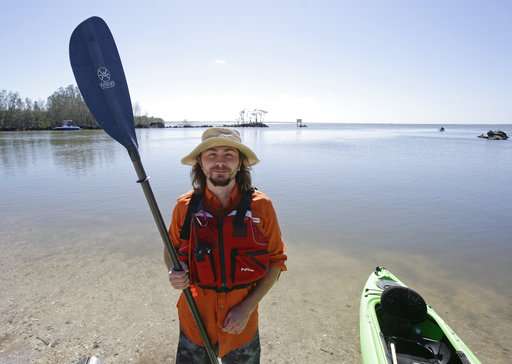
In Brevard County, which stretches along nearly half of the lagoon, the fish kill in March 2016 prompted voters to approve a sales tax to raise more than $300 million over 10 years for cleanup efforts, including upgrading wastewater treatment plants and removing thousands of old septic tanks. Florida environmental officials say they are pitching in $24 million in grants.
Local governments and universities are trying to restore mangroves to help filter the water and reduce erosion. And authorities are considering constructing several reservoirs that would hold polluted overflow water from Lake Okeechobee and keep it from flowing into the lagoon.
"The things we saw last year, that was a wake-up call," said Austin Mahan, who owns A Day Away Kayak Outfitters in Titusville. His business gets as many as 9,000 customers a year for kayak tours to see manatees and glow-in-the-dark plankton.
Mahan said he hasn't seen many cancellations, but for the first time last year customers from around the world called to ask about news reports of the algae and the fish die-offs.
Thompson, the restaurant owner, is embarrassed to no longer serve Florida oysters.
"I'm serving Chesapeake oysters in my restaurant," she said. "I would love to sell Florida oysters ... but I can't get them."
-
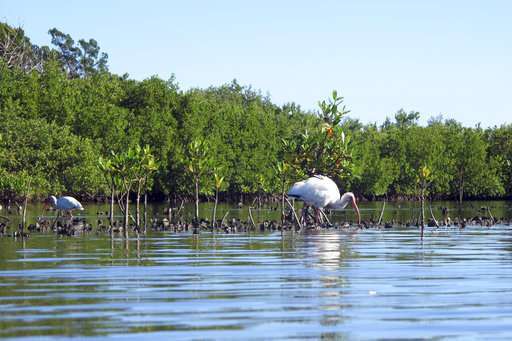
In this Oct. 20, 2016 photo, a white ibis eats in an oyster bed in the Indian River Lagoon, Fla. Once plentiful oysters have died off in the lagoon due to increased boat traffic as the region's population and development has swelled faster than anywhere else in the state. Last year, baby oysters died off en masse for the first time, a victim of increasing brown algae in these once pristine waters.An AP analysis of water testing data found that phosphorus pollution from farms and urban development, which the algae feed on, increased by 75-percent in the lagoon from 2000-2016. (AP Photo/Jason Dearen) -
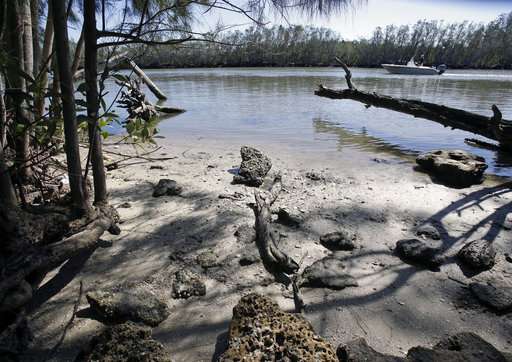
In this Friday, Feb. 10, 2017 photo, tree limbs knocked over by Hurricane Matthew in 2016 litter the shoreline as a boat passes by an inlet in the Indian River Lagoon, Fla. America's most biologically diverse waterway is seriously ill. Despite hundreds of millions of tax dollars spent to reduce pollution in Florida's 153-mile-long Indian River Lagoon, an Associated Press analysis of water quality data from 2000-2015 found stark increases in pollutants that cause harmful algal blooms. (AP Photo/John Raoux) -
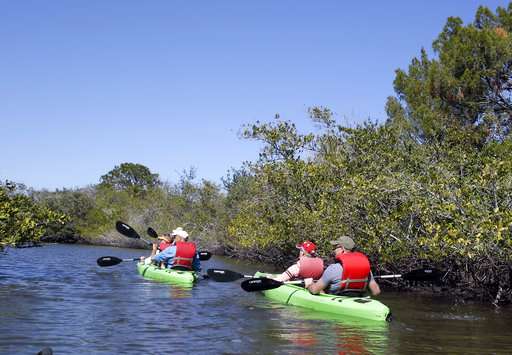
In this Friday, Feb. 10, 2017 photo,a group of kayakers explore a canal in the Indian River Lagoon, Fla. America's most biologically diverse waterway is seriously ill. Despite hundreds of millions of tax dollars spent to reduce pollution in Florida's 153-mile-long Indian River Lagoon, an Associated Press analysis of water quality data from 2000-2015 found stark increases in pollutants that cause harmful algal blooms. (AP Photo/John Raoux) -
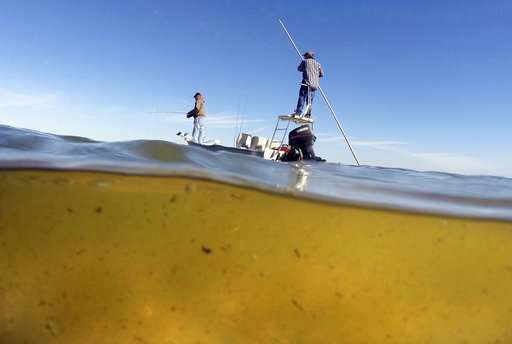
In this Feb. 17, 2016 file photo, Bob Chew, 64, of Edgewater, Fla., left, an avid fisherman and environmentalist, and Capt. Frank Brownell, 62, fish the murky waters of Mosquito Lagoon on the Indian River Lagoon, Fla. The 153-mile-long Indian River Lagoon has suffered from harmful algae blooms caused by pollutants like fertilizers and human waste. (Red Huber/Orlando Sentinel via AP, File) -
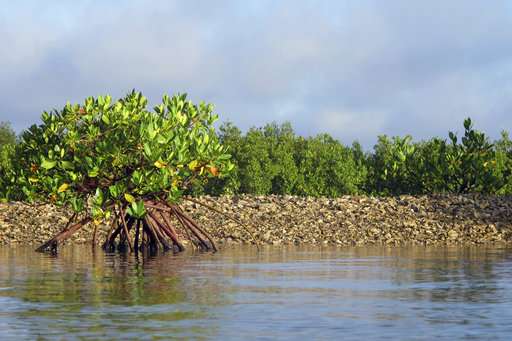
In this Oct. 20, 2016 photo, dead oyster shells are seen in the Indian River Lagoon, Fla. Once plentiful oysters have died off in the lagoon due to increased boat traffic as the region's population has swelled faster than anywhere else in the state. Last year, baby oysters died off en masse for the first time, a victim of increasing brown algae in these once pristine waters. An AP analysis of water testing data found that phosphorus pollution from farms and urban development, which the algae feed on, increased by 75-percent in the lagoon from 2000-2016. (AP Photo/Jason Dearen) -
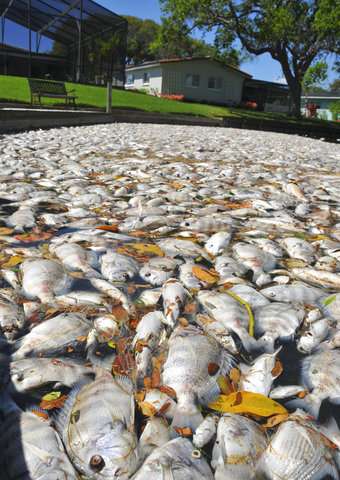
In this March 22, 2016 photo, dead fish clog the Banana River in Cocoa Beach, Fla. The river part of the Indian River Lagoon is America's most diverse waterway. The fish kill caused by algae blooms prompted voters to approve a sales tax to raise more than $300 million over the next ten years for cleanup efforts. (AP/Malcolm Denemark/Florida Today via AP)
© 2017 The Associated Press. All rights reserved.




















